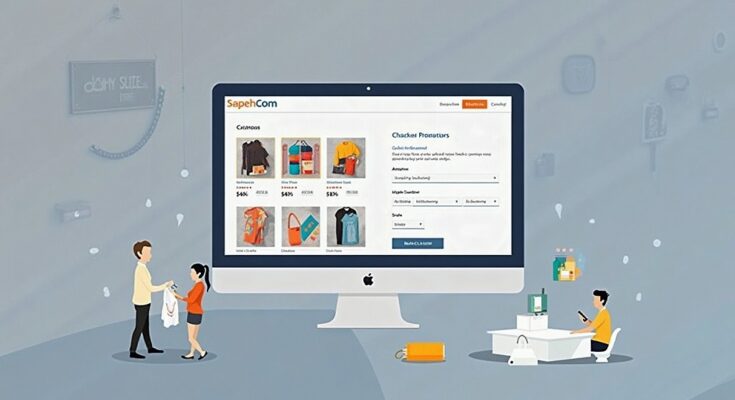Every week, billions are spent on retail promotions that miss their mark, draining resources without delivering returns. Trade promotion management software changes that dynamic by giving brands a way to plan smarter, track precisely, and win more often in a crowded market.
This software helps brands track promotional efforts across multiple channels, analyze their return on investment (ROI), and align strategies with real-time data. As retail margins tighten and customer behaviors shift rapidly, relying on spreadsheets and outdated methods no longer cuts it. A report by NielsenIQ found that 59% of trade promotions don’t break even, highlighting a critical need for smarter, data-driven systems. With the right technology in place, brands can eliminate waste, capture more value, and respond faster to market dynamics.
Let’s explore how trade promotion management software drives better performance, simplifies complex processes, and ultimately transforms the way retailers operate.
Why Retailers Need Trade Promotion Management Software
Trade promotions are expensive and hard to track. The right software brings structure, insights, and accountability to an area often dominated by guesswork. Advanced trade promotion management software like LEAFIO.AI makes a difference in retail by ensuring excellence in promotion planning and execution, optimizing inventory management, and providing valuable insights for strategic planning. It leverages AI technology for precise forecasting, aligns inventory with actual sales, and maintains optimal stock levels across the retail chain. Additionally, it automates routine tasks, reduces operational costs, and enhances transparency and visibility in promotional campaigns. Let’s dive deeper:
1. Increased Visibility Across All Promotions
One of the biggest challenges in retail is knowing what’s actually working. Trade promotion management software centralizes all promotional activities on one platform. This allows managers to see which campaigns are active, how they’re performing, and where money is being spent.
Having this level of visibility helps teams avoid duplication, identify underperforming promotions, and make quick adjustments. It also fosters better communication between sales, marketing, and finance departments. With real-time dashboards, companies can filter by region, product, or account, providing them with granular insight into what’s driving revenue—and what isn’t. This visibility not only improves transparency but also empowers leadership to make faster and more informed decisions.
2. Better Budget Control and Forecasting
Trade spend often represents the second-largest expense for manufacturers, but it is frequently mismanaged. A good TPM solution tracks every dollar, making it easier to stick to budgets and avoid overspending.
Forecasting becomes more accurate because the system leverages historical data and real-time inputs to predict outcomes. Instead of guessing, teams can plan with confidence, aligning promotions with both revenue goals and inventory levels. TPM software also alerts users to potential overages or unused budget, helping optimize allocations before problems arise. The result is tighter financial discipline and greater accountability across departments.
3. Faster, Smarter Decision Making
Manual promotion planning takes time and often relies on instinct more than insight. TPM software uses analytics and AI to provide instant feedback on what’s working and what isn’t.
This allows decision-makers to respond quickly, shifting budget, canceling ineffective campaigns, or doubling down on what’s delivering results. It reduces time spent chasing down information and increases time spent acting on it. Built-in scenario planning tools let teams model potential outcomes and compare ROI before committing to a promotion, making strategy a matter of evidence, not guesswork.
4. Improved Collaboration Between Teams
Trade promotions typically involve multiple stakeholders: sales reps, marketing managers, finance teams, and sometimes third-party brokers. Without a unified system, communication is fragmented and mistakes are common.
TPM software provides a shared platform where all teams can access the same information, leave notes, and track updates in real time. This reduces friction, speeds up approvals, and ensures everyone is working from the same playbook. Centralized documentation and approval workflows help prevent errors and miscommunication, streamlining the process from ideation to execution.
5. Compliance and Audit Readiness
Retailers and manufacturers face increasing pressure to justify every dollar spent. Whether for internal audits or regulatory compliance, documentation and traceability are key.
TPM software automatically tracks every promotion, approval, and payment. This digital trail makes it easy to demonstrate compliance and avoid legal or financial penalties. It also simplifies dispute resolution when partners question claims or deductions. With audit-ready records, companies reduce their risk exposure and ensure that no funds are misallocated or left unaccounted for.
6. Stronger Retailer Relationships
Retailers expect partners to bring strategic, data-backed promotion plans to the table. TPM software equips your team with the insights needed to negotiate better deals and prove the value of your programs.
It also helps you track how promotions are executed at the store level, ensuring compliance and consistency. Retailers appreciate partners who bring order, not chaos, to the collaboration. When your brand can deliver reliable performance data, store-level execution metrics, and a clear plan for improvement, it builds trust and opens the door for future promotional opportunities.
7. Enhanced ROI Through Post-Event Analytics
Trade promotion management can compare what a brand hoped to achieve versus what happened. This includes sales lift, margin impact, costs incurred, and compliance with planned execution. By understanding these metrics, businesses can identify patterns, improve future planning, and stop investing in underperforming promotions.
You can compare expected vs. actual performance, identify trends, and refine future campaigns based on evidence. This shift from a reactive to a proactive strategy can significantly improve the return on investment over time. With each cycle, your promotions get smarter, more targeted, and more cost-effective, delivering higher sales with lower waste.
Conclusion
Retail is changing fast, and brands that rely on outdated tools to manage trade promotions are falling behind. Trade promotion management software empowers teams to plan smarter, spend more wisely, and measure their impact in real-time. It turns complex workflows into clear processes and gives decision-makers the data they need to drive growth.
By using the right software, companies can align internal teams, build stronger relationships with retailers, and make every promotion count. Let’s take the guesswork out of trade promotions and replace it with visibility, control, and measurable impact.



